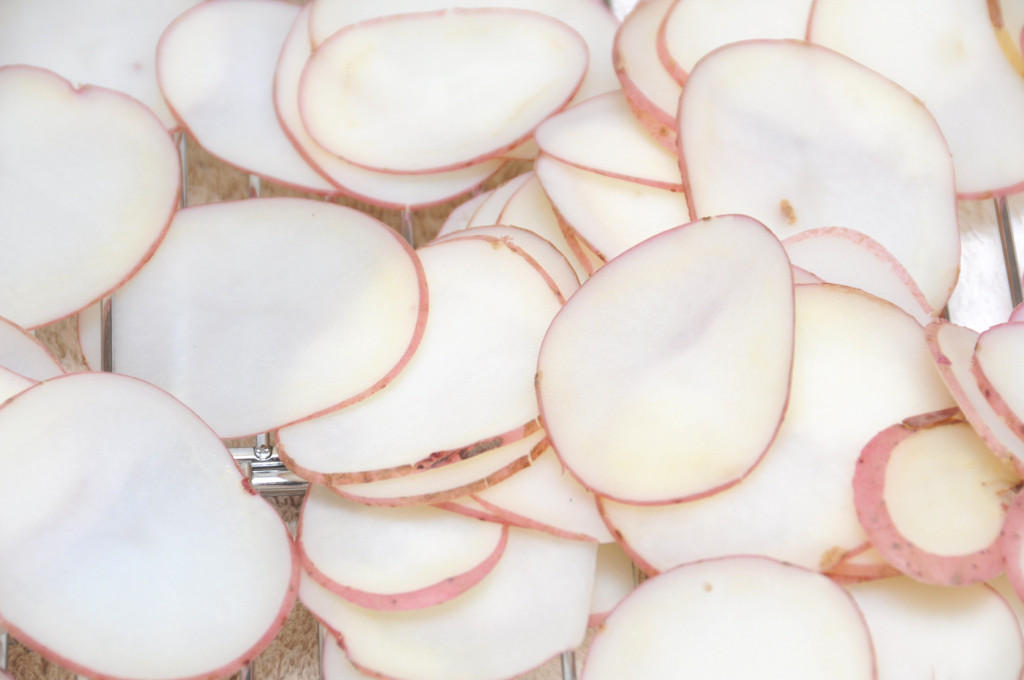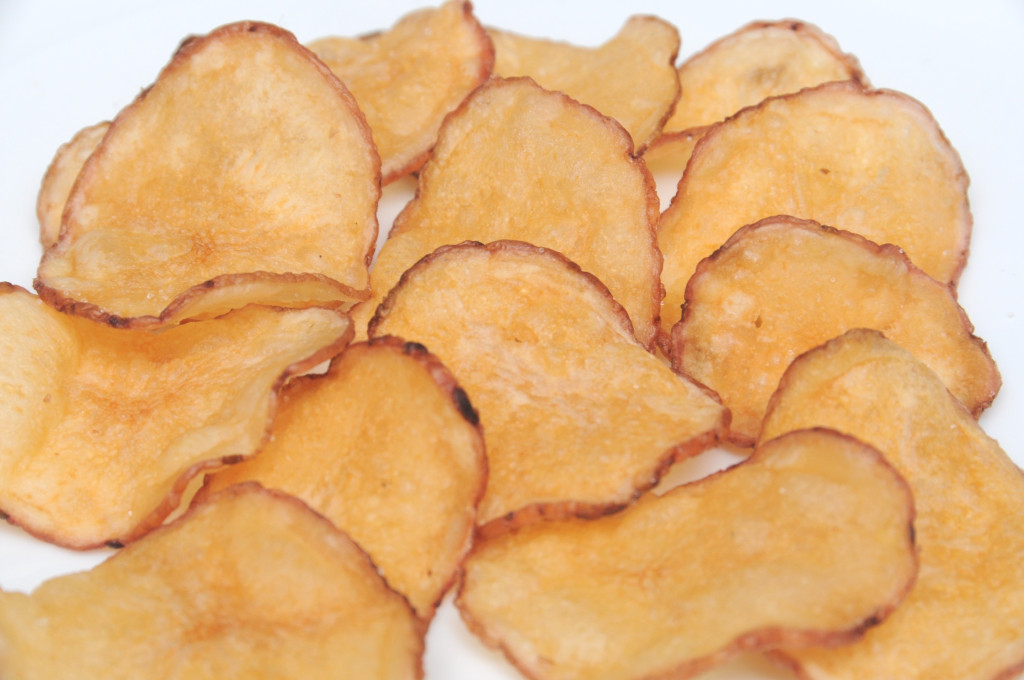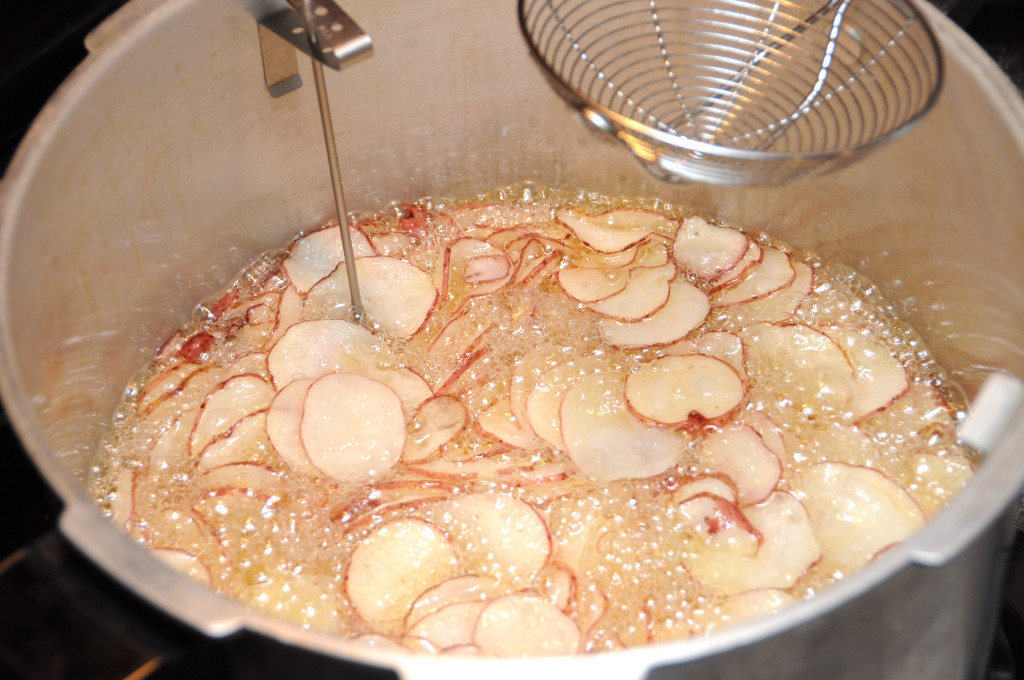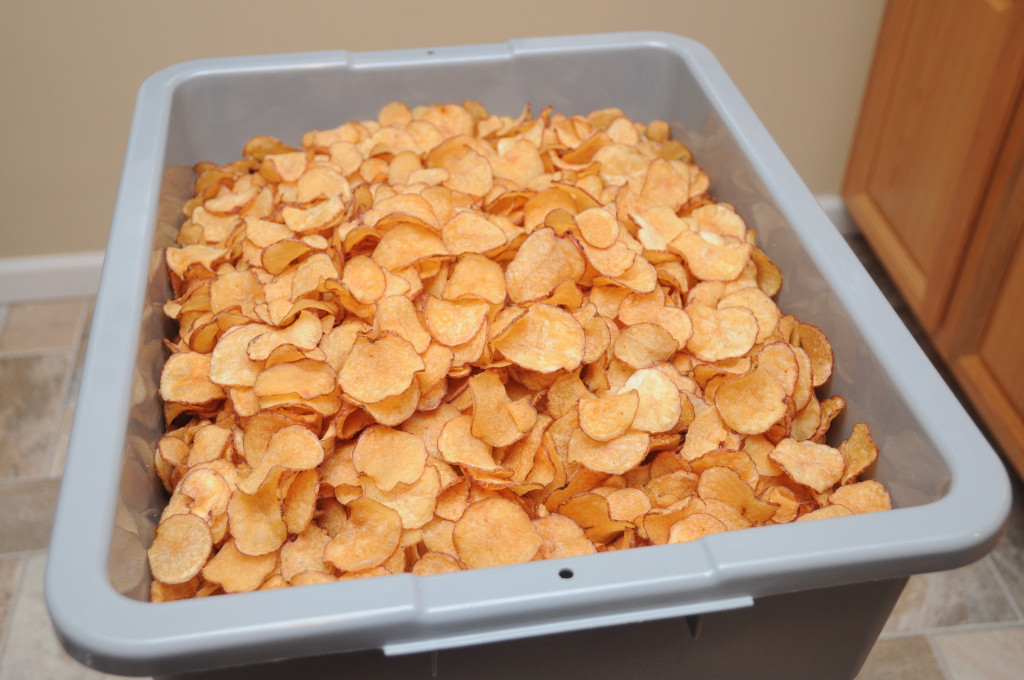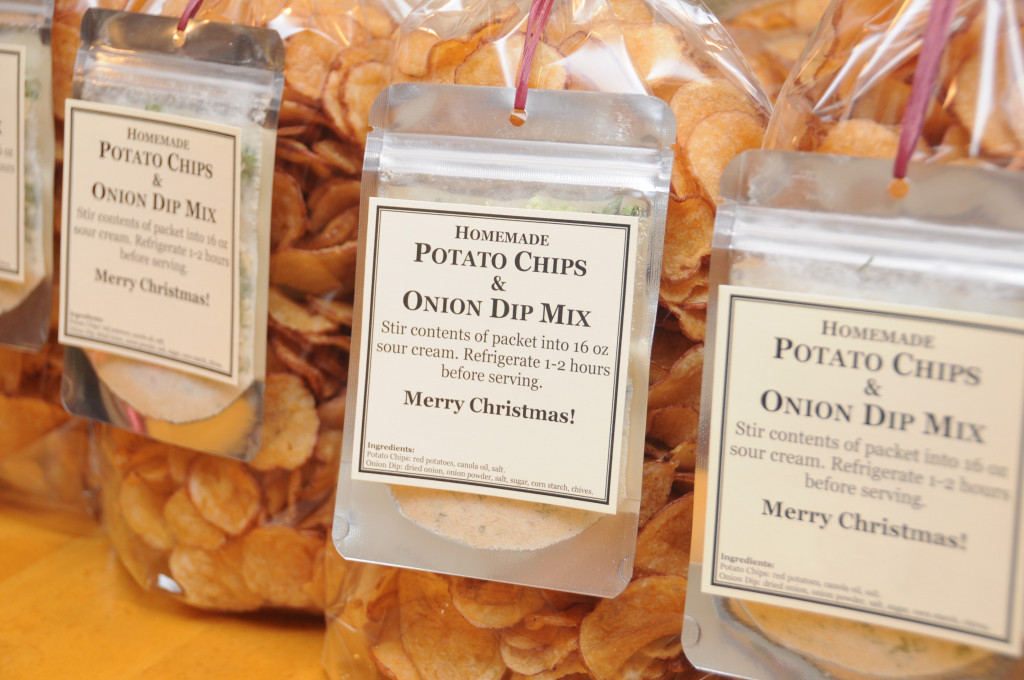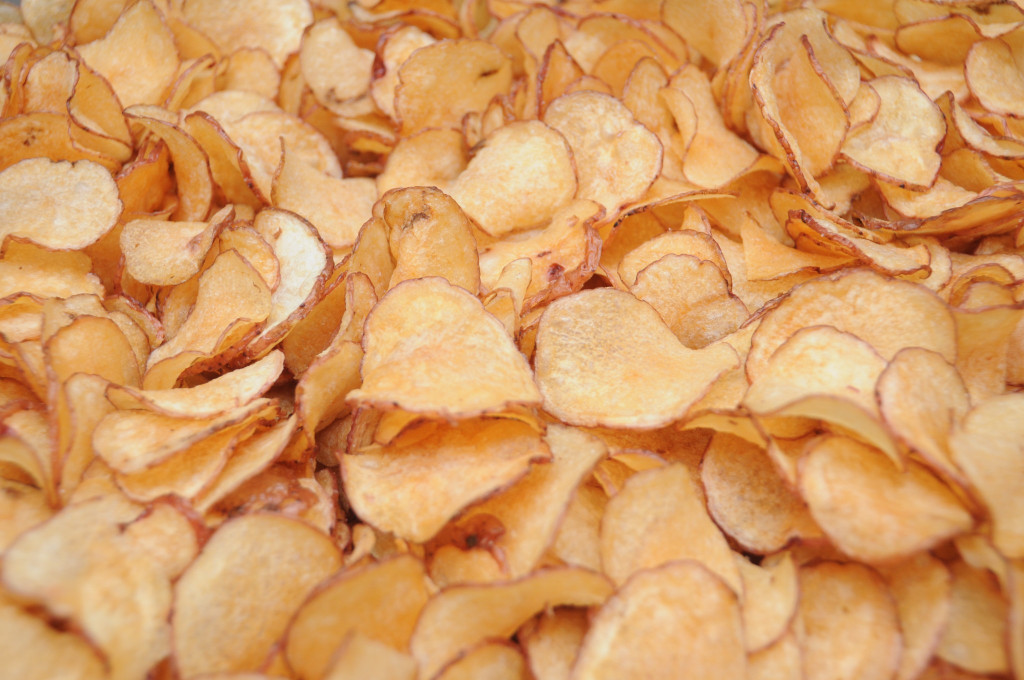Topics
Potato Chips & Onion Dip Mix (2023)
Kettle-style potato chips accompanied by sour cream & onion dip make a tasty snack.
I'd never made potato chips before, so this was an opportunity to try making something new. If you just take slices of raw potato and fry them in oil, you'll find they develop a dark brown color and have an almost burnt taste, despite not actually being burnt. As I understand it, this is caused by the starches inside the potato undergoing a maillard reaction. While the flavors from this reaction are key to making good caramel, it's not particularly appealing in a potato chip.
After a bit of digging, I discovered that large-scale potato chip manufacturers use potato varieties specifically bred to omit the starches that burn when the chips are fried. This is why, for example, a Lay's Classic potato chip is such a pale yellow color. Since these potato breeds aren't readily available, I had to make do with potatoes from the grocery store.
I started by following the recipe from Serious Eats. This entails boiling the potato slices before frying, to rinse away the undesirable starches. Spiking the water with vinegar keeps the potatoes from losing their firmness. The recipe used russet potatoes, which seem to be highly prone to the off-putting burnt flavor. The results weren't spectacular, but the methodology laid the foundation for what ultimately turned out really good.
The first change I made was using red potatoes instead of russets. These are a waxy variety, which hold their shape extremely well when boiled due to their high amylopectin content. Doubling the ratio of vinegar to water to two tablespoons per quart added an additional safety margin. The potatoes can be easily laid out on wire racks to cool and dry a bit before frying.
The original recipe suggested a boiling time of 3 minutes, which some experimentation revealed to be woefully insufficient. Below are three different batches of chips after frying:
The chips on the left were not boiled at all; the chips in the middle were boiled for 6 minutes; the chips on the right were boiled for 12 minutes. Notice how much paler the 12 minute-boiled chips turned out. This translates to a much more neutral-tasting chip lacking any objectionable burnt taste.
At this point, I had a delicious result that just needed to be scaled up. After boiling, the potatoes lose about 10% of their weight, and after frying, they lose another 70%. So in the end, a pound of raw potato yields about 1/4 pound of chips. 60 pounds of red potatoes from Restaurant Depot (a 10 pound bag from there costs the same as a 5 pound bag from the grocery store), along with a 35 pound carton of canola frying oil, was more than plenty.
Aside from the economy of scale, commercial frying oil benefits from the addition of anti-foaming agents and antioxidants which extend how long you can use the oil without it developing an off-taste. In the end, I had about 3 gallons of leftover oil, which I vacuum-sealed in glass jars for future use.
It's worth noting: the anti-foaming properties of the oil are not magic! The boiled potatoes contain a lot of moisture. The frying vessel needs to be deep enough, and the potatoes added gradually, to avoid an oil eruption onto the stove. I learned this the hard way. Oops. After cleaning up the mess, a 16 quart pressure canner wound up being a sufficient size for safely frying 2.5 pound batches.
The oil started at 350°F and quickly dropped to about 230°F after adding the potatoes. Supposedly, the dwell time at the lower temperature affects how crunchy the chips turn out. I had trouble finding research to back this up, and since I was pleased with the results, I didn't do further experimentation around this. Ultimately, I let the temperature recover no higher than 300°F to slow down any maillard reactions. Each batch spent about 20 minutes frying. After a sprinkle of salt and a quick spin in a salad spinner to fling off excess oil, the chips were done!
They stored well in air-tight buckets (along with a bag of silica gel as a safety measure), until I was ready to package them in cellophane bags. A packet of spices ready to be mixed with sour cream was the final touch.
The onion dip mix is similar to the onion soup mixes you can find at the store, but with a bit stronger of an onion flavor. I really liked it! Here's the recipe (the chives are mostly for color):
- 6 g salt (1 tsp)
- 4 g sugar (1 tsp)
- 2 1/2 g corn starch (1 tsp)
- 7 1/2 g onion powder (1 tbsp)
- 12 g dried minced onion (1 tbsp)
- 1 g freeze-dried chives (2 tbsp)
Mix with a pint of sour cream, and refrigerate for at least an hour before serving. Works well as a dip for chips or vegetables.
Yum!
